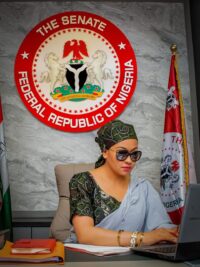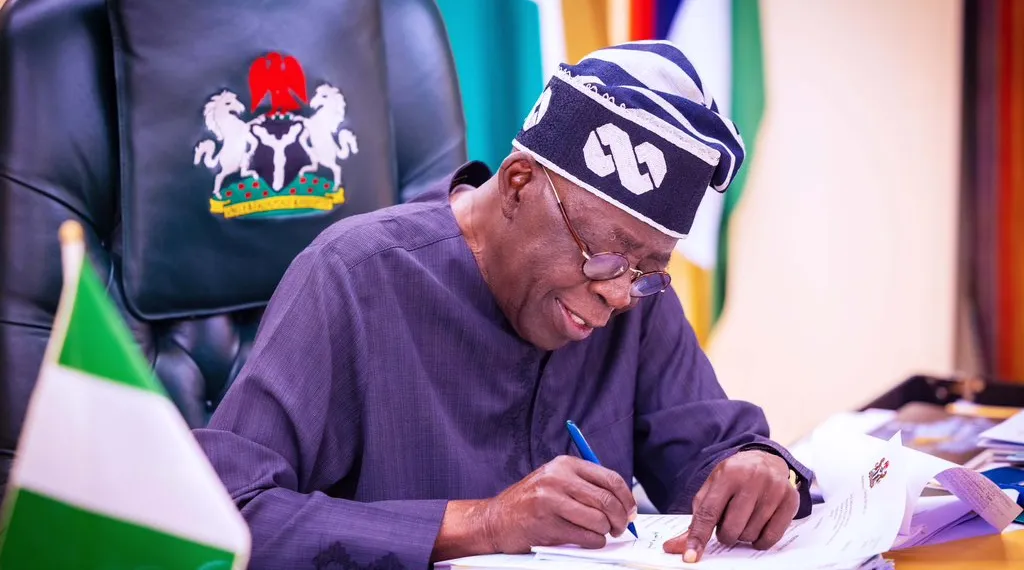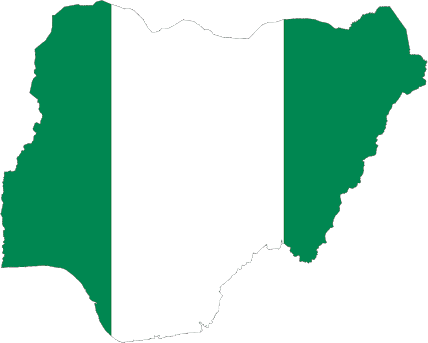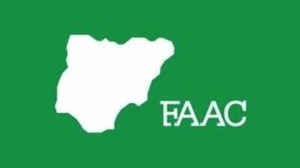Overview
• Increased oil production, rising oil prices, modest improvements in exchange rate policy, and federal government external commercial borrowings helped to increase foreign currency inflows into the Nigerian economy in 2017.
• However, Nigeria’s fiscal consolidation remains slow, while economic growth is improving at a slower pace than we previously envisaged.
• We are therefore affirming our ‘B/B’ ratings on Nigeria.
• The outlook is stable.
Rating Action
On March 16, 2018, S&P Global Ratings affirmed its ‘B/B’ long- and short-term sovereign credit ratings on Nigeria. The outlook is stable. At the same time, we affirmed our long- and short-term Nigeria national scale ratings at ‘ngBBB/ngA-2’.
Outlook
The stable outlook signals our assessment that non-oil-sector improvements could support higher economic growth and fiscal revenues over the next 12 months.
We may lower the ratings if we don’t see the significant fall in fiscal deficits that we expect in our base case.
We could raise our ratings on Nigeria if we see much higher economic growth prospects than our base case or if Nigeria’s external liquidity indicator improves, perhaps due to further accumulation of international reserves alongside an extension of external debt maturities.
Rationale
The ratings on Nigeria are supported by moderate external indebtedness and a relatively low general government debt stock. However, debt-servicing costs are high.
The ratings remain constrained by our view of the country’s low economic wealth, weak institutional capacity, lower real GDP per capita trend growth rates than peers at similar development levels, and low monetary policy credibility.
Institutional and Economic Profile: Economic performance is still weak, with trend growth below peers
• Nigeria’s current pace of economic growth remains low relative to peers with similar wealth levels.
• Political decision-making in Nigeria can be unpredictable, since government institutions are relatively weak.
• Despite underlying tensions and complexities, Nigeria is a democratic system that has weathered a transfer of power between different political parties.
Nigeria is a sizable producer of hydrocarbons. The oil sector’s direct share of nominal GDP is officially estimated at about 10%, but oil and gas account for over 90% of exports and at least half of fiscal revenues.
In 2017, Nigeria emerged from recession. The economy grew, in real terms, by 0.8% in 2017, compared with a 1.6% contraction in 2016. The recovery is being driven by improving oil prices, increasing foreign currency inflows, and strong agricultural sector performance.
Oil production also stabilized at about 1.9 million-2.1 million barrels per day, after disruptions in early 2017. In the near term, we estimate that the economy will grow at 2.4% of GDP in 2018 (compared with our previous forecast of 3%) and will average 2.8% in 2018-2021. Excluding agriculture, the non-oil economy has yet to fully respond to the improving conditions, with modest growth of less than 1% in 2017.
Thus, we expect non-oil-sector improvements will support our forecasts for higher economic growth. However, real per capita GDP growth of negative 0.19% (which we estimate by using 10-year weighted-average growth) remains well below that of peers with similar wealth levels. Nigeria has significant infrastructure and energy shortfalls and low income levels, with GDP per capita estimated at US$1,800 in 2018.
We observe that Nigeria is taking steps to improve its governance and strengthen the business environment. The latest World Bank Ease of Doing Business Indicators show Nigeria improving 24 places to No. 145 of 190 countries. In our view, political decision-making in Nigeria can be unpredictable.
We view government institutions as relatively weak, with slow decision-making on policy issues. Fiscal budgets are frequently passed well after the year has begun, which delays the government’s responsiveness to economic challenges. We also view decision-making as largely centralized in the person of the president, although we note that the federal system of government helps to redistribute wealth and spread power to some extent.
Nigeria has a democratic system with a tested transfer of power between different political parties, last witnessed at the 2015 general elections. The next presidential elections are due in 2019. The presidential candidates are not clear at this stage but the dominant parties will remain the ruling coalition of the All Progressives Congress and the opposition People’s Democratic Party. While security risks have slightly abated compared with the last two years, we still see sporadic attacks in the North East owing to Boko Haram.
Flexibility and Performance Profile: An improved external position and low general government debt is juxtaposed against sizable fiscal deficits and high debt-servicing costs Nigeria’s external position has improved, owing to higher oil prices and production volumes, modest improvements in exchange rate policy, and federal government external commercial borrowings that are helping to increase foreign currency inflows and have allowed the central bank to build external buffers.
Nigeria still operates multiple exchange rates, which we consider a managed float with a short track record, while foreign exchange restrictions on some key items remain for an extended period.The country has a relatively low level of general government debt but high debt-servicing costs.
Although oil revenues support the economy when prices are high, we view them as exposing Nigeria to significant volatility, in terms of trade and government revenues. Rising oil prices, a relatively new market-determined exchange rate window introduced in April 2017, and government external borrowings are helping to increase foreign currency inflows into the economy, allowing the central bank to increase foreign-exchange reserve buffers.
We estimate that the current account surplus increased further to 2% of GDP in 2017 compared with 1% in 2016 and an average of 1.6% of GDP in 2018-2021. The recovery in oil prices and production have helped strengthen the trade balance. In January 2018, we revised our oil price assumptions (see “S&P Global Ratings Raises 2018 Brent And WTI Oil Price Assumptions,” published Jan. 18, 2018, on RatingsDirect).
Higher oil prices in 2018 could support a further current account surplus strengthening closer to 3% of GDP for 2018. We assume a lower oil price in 2019, however, and gradually rising imports along with foreign currency supply, which leads us to expect only limited current account strengthening over 2019-2021. The central bank has been able to increase its external buffers to close to seven months import cover compared with five months cover three years ago.
Improving current account balances and external buffers have led us to forecast lower ratios of narrow net external debt to current account receipts (CARs) and of gross external financing needs to CARs plus usable reserves. We now estimate gross external financing needs will average close to 100% of CARs plus usable reserves during 2018-2021.
We expect the government’s external financing needs to be covered by a combination of credit lines from multilateral partners, and from the international capital markets. The government has been able to issue eurobonds to the value of US$5.5 billion in the past six months. We now estimate narrow net external debt (external debt minus liquid external assets) will only increase to 36% of CARs in 2021 from 26% this year.
We have revised our 2017 general-government fiscal deficit estimate to above 5% of GDP relative to our 3.5% of GDP assumption in September 2017, based on preliminary outturn. We now estimate the annual change in net general government debt will average 3.6% of GDP in 2018-2021, compared with 3% of GDP previously.
The weaker expectations are based on slower non oil revenue growth compared with budget, transfers by federal government to the lower levels of government remaining at a high level, a faster implementation of capital budget spending, and overall still relatively high deficits of states and local governments. Despite rising oil related revenues, fiscal adjustment challenges remain in 2018.
The states and local governments are still receiving substantial transfers and running deficits that we estimate will remain at around 1% of GDP until 2019. Our overall general government deficit projections exclude the clearance of fiscal arrears to contractors, suppliers, and lower levels of government. If a proposed plan to clear fiscal arrears, estimated between 2% and 3% of GDP, is approved by the national assembly in 2018, through the issuance of naira-denominated debt securities, it could increase our deficit and debt projections by the same margin.
Overall, we forecast that Nigeria’s gross general government debt stock (consolidating debt at the federal, state, and local government levels) will average 27% of GDP for 2018-2021, comparing favorably with peer countries’ ratios. We also anticipate that general government debt, net of liquid assets, will average 18% of GDP in 2018-2021.
We include debt of the Asset Management Corporation of Nigeria (AMCON; around 5% of 2018 GDP)–created to resolve the nonperforming loan (NPL) assets of the Nigerian banks–in our calculation of gross and net debt. Over 70% of government debt is denominated in naira.
Despite the relatively low government debt stock, general government debt-servicing costs as a percentage of revenues are high and have increased in recent years from below 10% in 2014 to our projection of over 20%, on average, in 2018-2021. The central government alone has debt servicing costs of close to 50% of revenues, which in our opinion limits fiscal flexibility.
The steep increase in the ratio is due to a combination declining oil revenue since 2014 and higher borrowing costs in the domestic market. The government has borrowed externally to fund maturing short-term domestic debt obligations, which are costly, as a way to reduce borrowing costs.
In April 2017, the Central Bank of Nigeria (CBN) introduced a new exchange rate window, the Nigerian Autonomous Foreign Exchange Fixing Mechanism (Nafex), commonly known as the New Investors and Exporters Foreign Exchange Window. The new window adds to the interbank market, and the two have become the main exchange rate windows utilized in foreign currency trading. The interbank market window trades at around $1 to NGN326-NGN345, while the new foreign investors exchange window trades at $1 to NGN360. However, Nigeria still maintains foreign exchange restrictions on some current and capital transactions, including import restrictions on 41 categories of goods.
Following years of heightened risks, operating conditions for the Nigerian banking sector are improving due to the gradual economic recovery, rising oil prices, increasing U.S. dollar supply in the banking system, and Nigeria’s successful tapping of the Eurobond market. The majority of banks have overcome their short-term liquidity challenges. We expect muted loan growth as well as gradual improvements in asset quality and profitability, with top tier banks faring better than the sector average.
Capital adequacy remains exposed to unexpected weakening of the naira and weak internal capital generation because of the potential provisioning shortfalls and pressure on net interest margins on the back of the federal government conversion of part of its short-term debt into longer dated U.S. dollar-denominated debt. We understand that banks have received guidance to report their year-end 2017 results with a naira exchange rate at about $1 to NGN330.
In addition, the CBN has restricted banks from distributing dividends if their NPLs ratio exceeds the 5% regulatory limit. We may see some banks convert their banking license to a national one to meet the lower minimum capital adequacy ratio. The introduction of the 1% additional buffer has been suspended for now to avoid putting further pressure on banks.
Inflation remains high. In December 2017, annual consumer price inflation accelerated to 16.5% compared with 15.7% in December 2016. The rising trend has been attributed to the June 2016 devaluation and structural factors such as increases in the cost of food, electricity, transport, and inputs, as well as low industrial activity. Inflation started falling in late 2017 and the trend is likely to continue in 2018. In February 2018, inflation was recorded at 14.3% suggesting a downward trend in line with our base case. Consequently, we expect that inflation for 2018 will move to 12% and slowly fall toward single digits through 2021.














